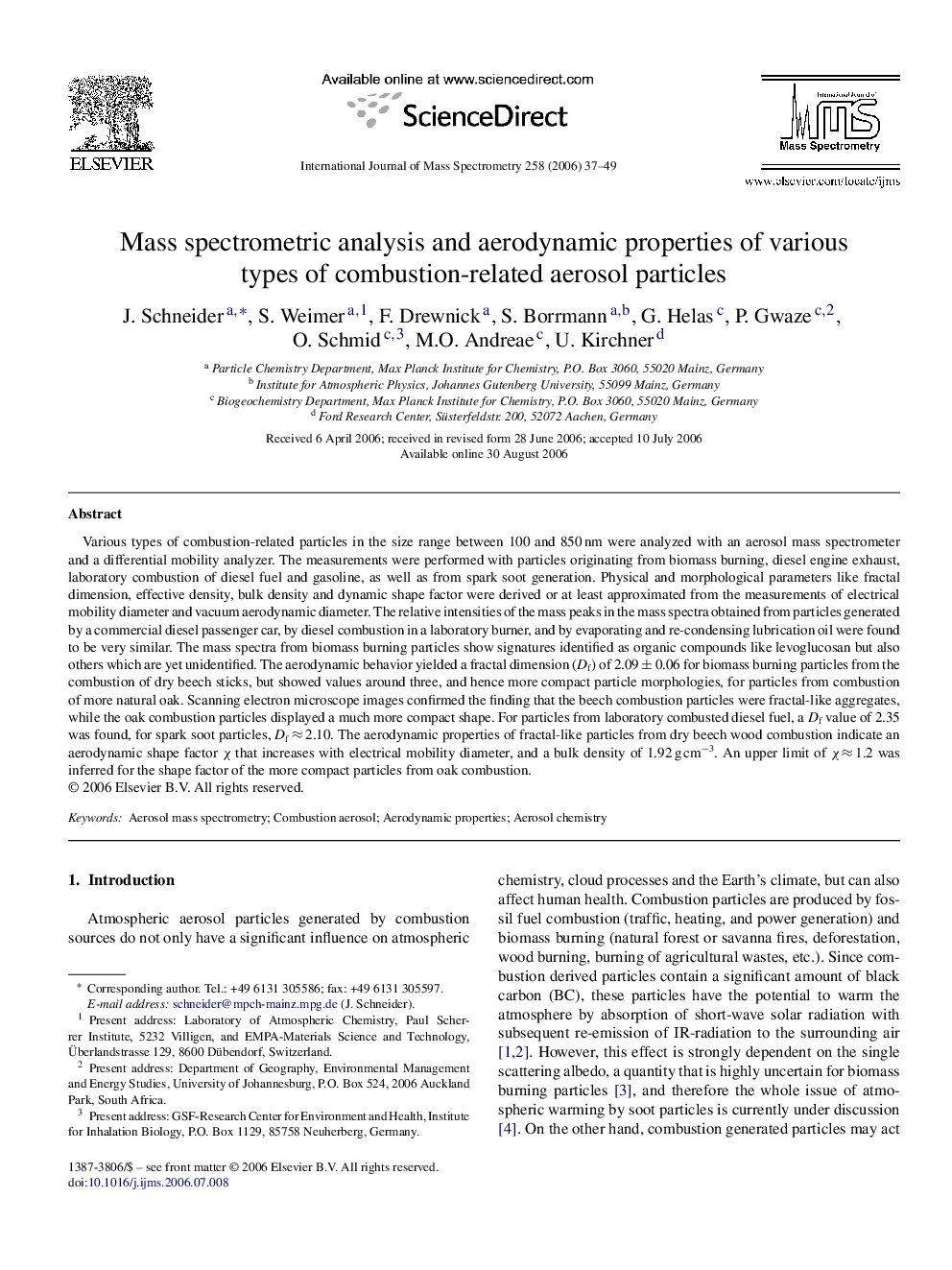| Article ID | Journal | Published Year | Pages | File Type |
|---|---|---|---|---|
| 1194999 | International Journal of Mass Spectrometry | 2006 | 13 Pages |
Various types of combustion-related particles in the size range between 100 and 850 nm were analyzed with an aerosol mass spectrometer and a differential mobility analyzer. The measurements were performed with particles originating from biomass burning, diesel engine exhaust, laboratory combustion of diesel fuel and gasoline, as well as from spark soot generation. Physical and morphological parameters like fractal dimension, effective density, bulk density and dynamic shape factor were derived or at least approximated from the measurements of electrical mobility diameter and vacuum aerodynamic diameter. The relative intensities of the mass peaks in the mass spectra obtained from particles generated by a commercial diesel passenger car, by diesel combustion in a laboratory burner, and by evaporating and re-condensing lubrication oil were found to be very similar. The mass spectra from biomass burning particles show signatures identified as organic compounds like levoglucosan but also others which are yet unidentified. The aerodynamic behavior yielded a fractal dimension (Df) of 2.09 ± 0.06 for biomass burning particles from the combustion of dry beech sticks, but showed values around three, and hence more compact particle morphologies, for particles from combustion of more natural oak. Scanning electron microscope images confirmed the finding that the beech combustion particles were fractal-like aggregates, while the oak combustion particles displayed a much more compact shape. For particles from laboratory combusted diesel fuel, a Df value of 2.35 was found, for spark soot particles, Df ≈ 2.10. The aerodynamic properties of fractal-like particles from dry beech wood combustion indicate an aerodynamic shape factor χ that increases with electrical mobility diameter, and a bulk density of 1.92 g cm−3. An upper limit of χ ≈ 1.2 was inferred for the shape factor of the more compact particles from oak combustion.
